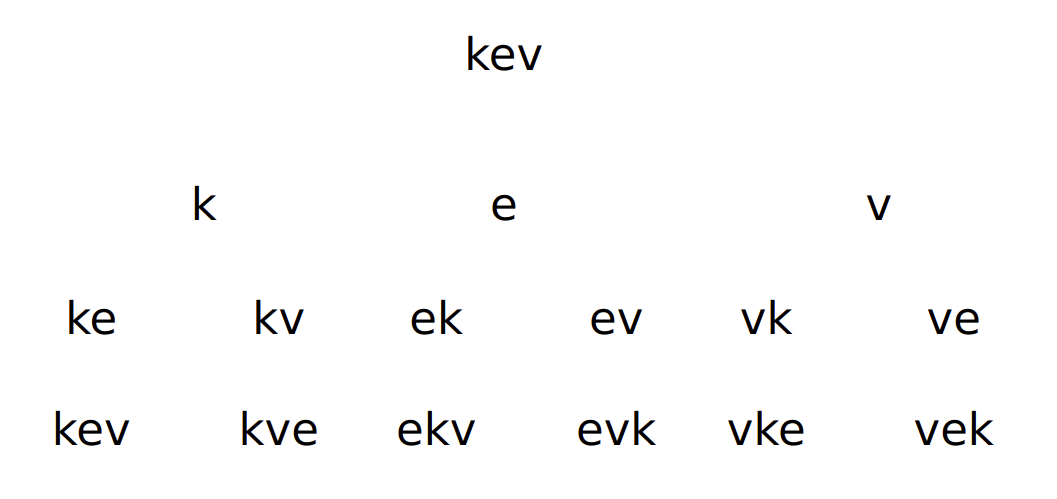Big O
19 Oct 2021
This post is my notes while going through Cracking the Coding Interview [1]. I do not own any of the materials.
Welp I should remember these stuff from first year, but hey, doesn’t hurt to review (and most likely learn something new).
Theory
Recall that big O is actually the upper bound. So you can say that the runtime of bubble sort is O(N^1000). Why not. Big omega is lower bound. Big theta is the tight bound.
Big O/omega/theta is different from best/worst/average case. Bubble sort’s worst case is (thankfully) not O(N^1000).
Stack space counts as space complexity too. The below code has space complexity of O(n).
int sum(int n) {
if (n <= 0) {
return 0;
}
return n + sum(n-1);
}
Amortized Time
The classic example of adding an element of an ArrayList, which doubles its current size if its full. If I insert X elements, then the amortized runtime is runtime_of_X / X. To insert X elements, we need to perform 1+2+4+8+…+X copy operations. Or, if reading this backwards, X+X/2+X/4+…+1 = 2X. So inserting X elements require 2X copy operations. The amortized runtime is O(1).
Recursive Runtimes
Often times (not all the time), the runtime of a recursive algorithm is O(number of f() calls per f() ^ depth). It is also sometimes better to write things out.
Just using the rule, the below code should be O(2^n). Let’s check for n = 4. f(4) -> 2xf(3) -> 4xf(2) -> 8xf(1). There are in total 1+2+4+8 = 15 calls, which is 2^4-1.
int f(int n) {
if (n <= 1) {
return 1;
}
return f(n - 1) + f(n - 1);
}
Some Interesting Questions
-
An algorithm takes in an array of strings, sort each string alphabetically, and then sort the array. The key is to realize there are two parameters, max len of string (s) and array size (a). In addition, each string comparison takes O(s) time. So the runtime is O(sort all string) + O(sort array) = O(a*s*log s) + O (a*log a*s)
-
Runtime complexity of the following code (we are in java land now)? ```java void permutation(String str) { permutation(str, “”); }
void permutation(String str, String prefix) { if (str.length() == 0) { System.out.println(prefix); } else { for (int i= 0; i < str.length(); i++) { String rem = str.substring(0, i) + str.substring(i + 1); permutation(rem, prefix + str.charAt(i)); } } } ```
It is useful to figure out what this code does and how it does it first. Let str == “kev”. The for-loop iterates through each letter in the word, k->e->v. For each of these letters, rem is the rest of the letters, ev->kv->ke. For letter k, we call permutation(ev, k), which iterates through letters e->v. This then becomes permutation(v, ke) and permutation(e, kv). The next recursions only have 1 call, which reach the terminating condition, printing kev and kve. So the tree looks sth like:

Insights are important. This code is basically moving characters from str to prefix one at a time. The tree shows that the time complexity is a bit tricky. The first level contains 3 calls, then each node in the first level produces 2 calls (since there are 2 letters left). So there are n! leaf nodes for a string of n letters. There seems to be n levels, so there are O(n*n!) nodes in the tree. But, for each node, we need to perform string concatenate, which is a O(n) operation in C++.
Aside: C++ string are mutable, which makes this O(n). If immutable, the runtime would be worse.
Thus, the total runtime is O(n*n*n!). Done.
Or are we? Turns out, the total number of nodes in the tree is less than O(n*n!). Ex. for n = 5, we have 5! nodes in the nth level, 5!/1 in n-1th, 5!/2! in n-2th, 5!/3! in n-3th etc. The sum of this series is e*n!, which means that the total runtime is instead O(n*n!).
Some takeaways from this problem:
- Do not forget that the runtime also needs to include HOW MUCH WORK EACH ITERATION PERFORMS, and not just how many iterations are there.
- Understanding the core helps with runtime analysis.
- Using simple examples to learn what the code does.
Sources
[1] https://www.crackingthecodinginterview.com/